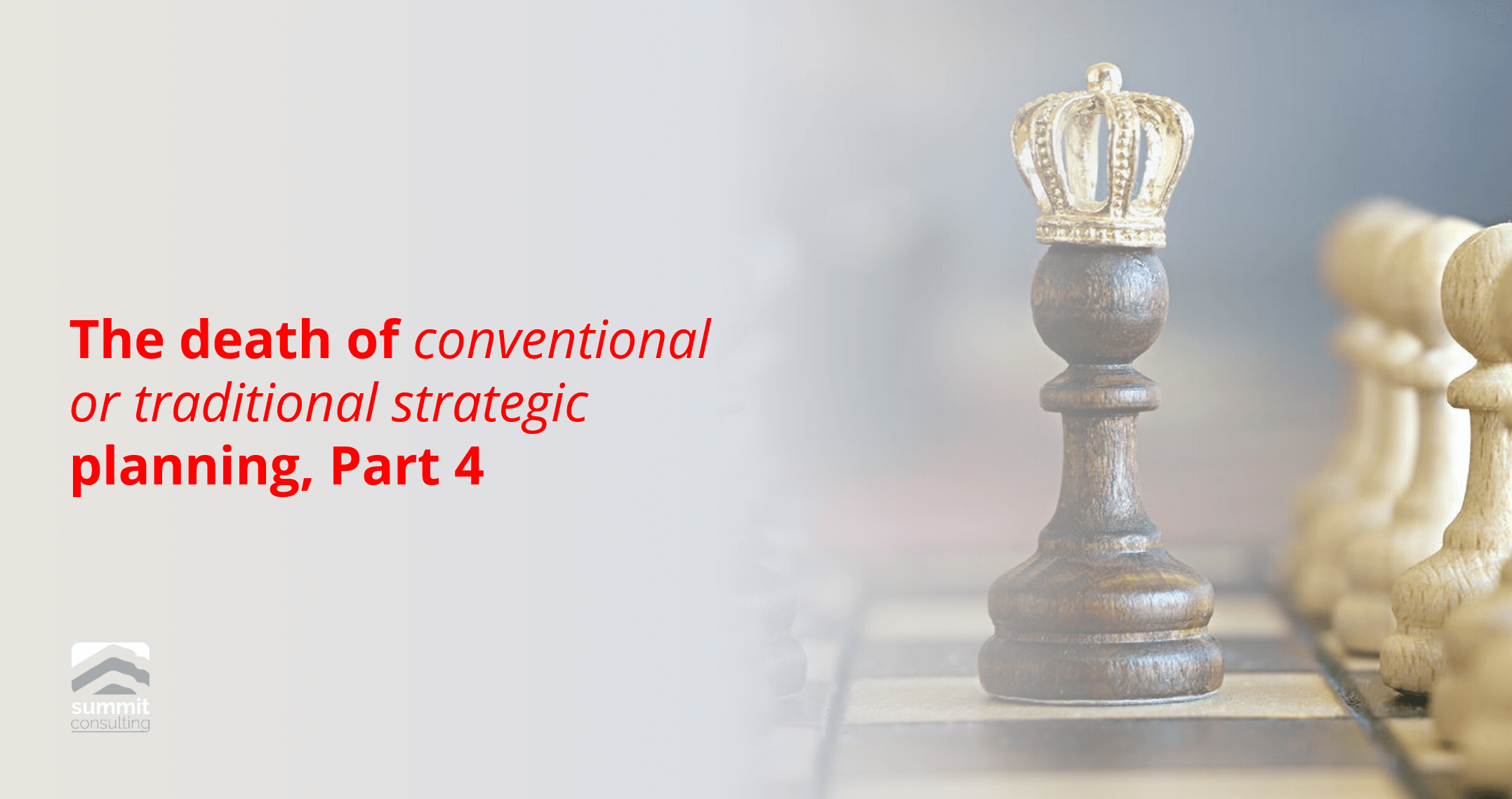The term strategy is one of the most used by leaders today, yet few understand it well. Many strategic plan documents lack a “strategy.” This makes winning difficult.
No company wins by luck.
If such companies exist, their winning is not sustainable. A good strategy and effective execution make winning a deliberate action and the focus is on maintaining a competitive advantage. Your competitive strengths must come from strategic intent, which must be articulated in your strategic plan in the form of a business model. To formulate a good strategy, leaders must deploy good strategic thinking processes to come up with an organic strategy.
The modern strategic planning insights
Ambition/aspiration vs vision
Vision – and organization’s ‘picture’ of how success looks like in the future drives strategic thinking today, as it did in the past. However, this approach has a problem. Many companies were founded way back in the 1980’s or early 2000s with the founders defining the vision then based on the conditions at the time and information available to them.
Today, so many things have changed.
Your company’s “vision” of 2000, is outdated as of today. You better perspectives and insights thanks to the internet of things, big data, and analytics capabilities. You cannot anchor your 2020 strategy on the 2000 vision! That is why traditional strategic planning is dead.
The qualities of a good vision are what do you want to accomplish, who are you winning against (a winning dimension), and the timelines to accomplish it. Gone are the days of an open ending vision. Each strategy should have a vision to accomplish, after which, such a vision may be revised depending on the achievements.
Do not confuse the purpose of the organization with vision, yet traditional planning approaches make the mistake of stating vision as if it were the purpose. The result is a poor strategy that is anchored on a vision that is out of current realities.
Take a personal example.
When I was young, my dream or vision was to enroll at a Technical College. This was informed by the people in the village around me. Everyone who had studied at Munteme Fatima College, a German Government funded technical college, lived a better life compared to those who had gone to secondary college, Munteme Fatima College.
My vision changed when I failed technical college admission exams because I was considered young to join, as a reason for my failing the entrance exam. Then my Grandpa advised me about a University where the people who run the country go to. And indeed, after joining the secondary school and later joining Makerere, I realized that many people in the village die without achieving even 20% of their potential because they don’t know what takes place outside the district!
Once at Makerere and in a big city, my “vision” changed to thinking about Harvard and playing in a big city like London. I could no longer entertain a vision I had formed when I had not exposure.
Your vision is the ambition or aspiration that must drive everything you do and align team effort to a common agenda. The purpose should define what your business is done, which brings like-minded people together. Whereas your purpose may be to deliver “to help the less fortunate people access justice”, your vision/ambition/aspiration could be defined as: “a recognized leader in free legal support to women and children living in Kampala slums by 2030.”
This vision passes several tests. To be preferred – means there are many other not for profit organization are in the same cause, but you want people to prefer your organization over the rest. You offer legal support free of charge to women and children in slums. You want to be preferred by 2030.
This means, after 2030, you will review whether you attained your ambition or not and readjust. It
To be continued in part 4.
Copyright Mustapha B Mugisa, 2020. All rights reserved.









